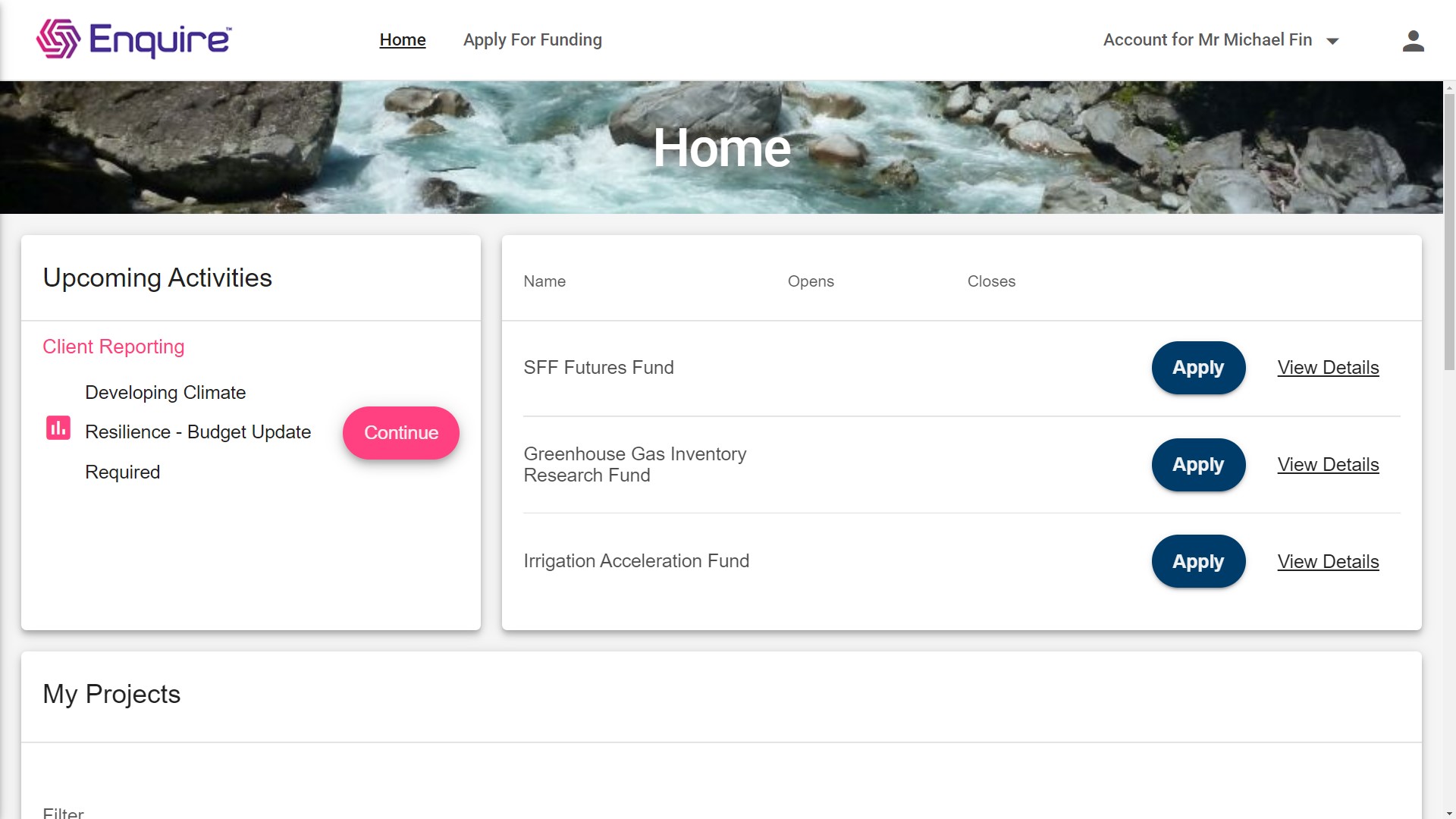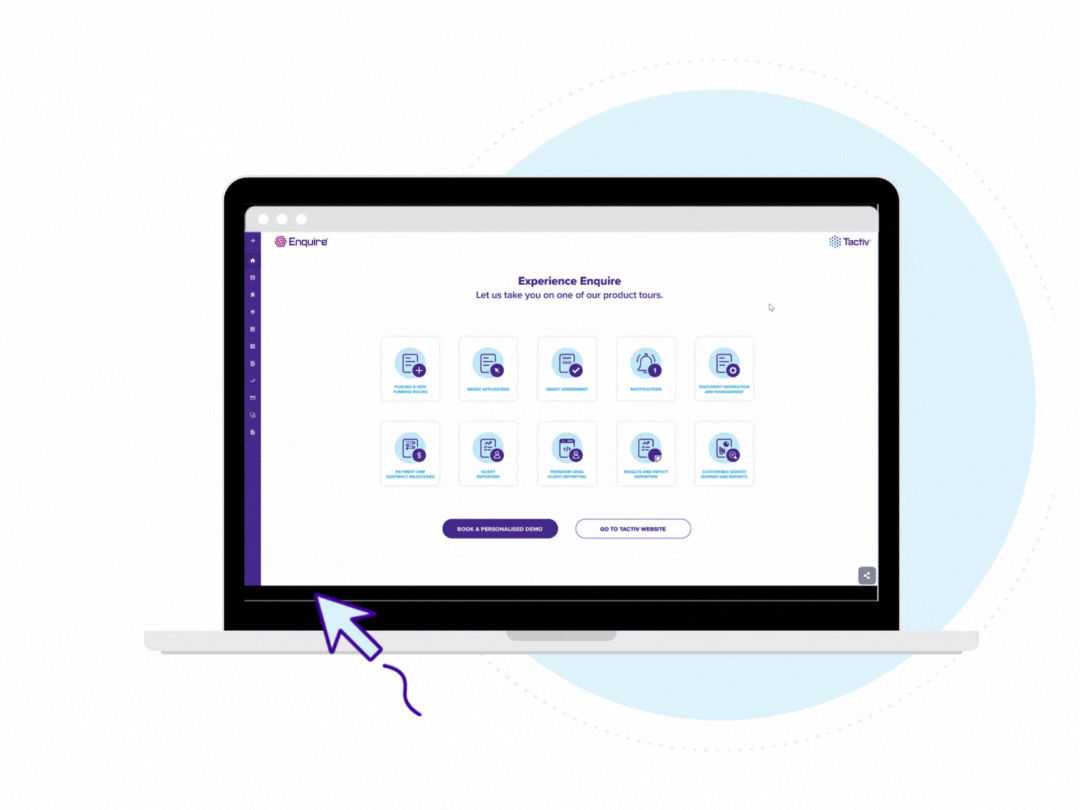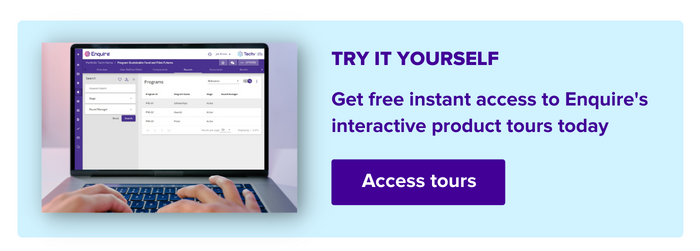The Biggest Nonprofit Trends of 2023
The nonprofit sector is constantly evolving, and it’s important for organisations to stay up to date on the latest trends to stay relevant and effectively carry out their mission. This year, we’ve identified several key trends that are likely to have a significant impact on nonprofits. From the increasing use of technology to a growing focus on collaboration, partnerships, and transparency, these trends will shape the way that nonprofits operate in 2023 and beyond. In this article we will cover 6 major nonprofit trends that will impact all organisations in the sector:
- Collaboration and partnerships
- Transparency and accountability
- Diversification of funding
- Capacity building
- Nonprofit Advocacy
- Adoption of Digital Solutions
We’ll also explore a few of the tools organisations can use to stay on top of these trends throughout the year.
Growing Need for Collaboration and Partnerships
With the not-for-profit sector experiencing a strain on resources, collective action towards shared goals is increasingly necessary and beneficial for all parties. There are several examples of a growing trend towards collaboration and partnerships in the nonprofit sector, including:
- Mergers and acquisitions: Nonprofit organisations are increasingly merging with or acquiring other organisations in order to increase their impact and reduce costs. These types of partnerships can help organisations to pool resources and expertise, eliminate redundancies, and expand their reach and services. This allows the combined organisation to offer a more comprehensive set of services to their clients and achieve greater results. In 2022, Australia saw a consolidation of not-for-profits within the aged care sector, and most analysts expect this nonprofit trend to continue into 2023 and beyond.
- Cross-sector partnerships: Nonprofits are forming partnerships with businesses, governments, and other organisations in order to leverage their respective strengths and resources. These types of partnerships can help nonprofits to access new funding and resources, tap into new networks and expertise, and expand their impact. These partnerships often require information sharing to ensure all parties benefit, which can be achieved through the technological innovations we have seen across the sector in 2022 – such as through the adoption of purpose-built nonprofit reporting software.
- Collective impact initiatives: Nonprofits are coming together to work on a common issue or goal, often under the leadership of a backbone organisation that coordinates their efforts. Collective impact initiatives are a way for nonprofits to achieve greater impact by working together, rather than in isolation. These initiatives often target complex social issues such as poverty, education, and health, which require a multi-faceted approach and the involvement of multiple stakeholders. Such initiatives are also occurring at the international level. These partnerships are sometimes facilitated by networks of common purpose, such as the Asian Venture Philanthropy Network, which is the largest impact network of its kind in the Asia Pacific region.
International Cooperation Requires Digital Solutions
AVPN’s example reflects another nonprofit trend we are seeing in the rise of funder and beneficiary input and collaboration throughout the funding process. As funders look to maximise the impact on their investments into social programs, there is a growing expectation that they will hear from sources on the ground, including the program’s delivery partners and beneficiaries. This ties into the second major trend of increased demands for transparency in the nonprofit sector.
The digitisation of nonprofit projects enables instantaneous collaboration and communication across borders, enabling teams with international operations to track and manage projects in real time. Data captured and analysed in real time is far more useful for decision makers and enhances the overall transparency of nonprofits, which is the next trend we have identified.
Increasing Demands for Transparency
Transparency and accountability are becoming increasingly important for nonprofits for a variety of reasons. First, transparency helps to build trust and credibility with stakeholders, including donors, volunteers, and the public. By being open and transparent about their operations and activities, nonprofits can demonstrate that they are responsible and trustworthy stewards of the resources they are given. This accountability helps to ensure that nonprofits are using their resources effectively and efficiently to achieve their mission. By being accountable to their stakeholders, nonprofits can demonstrate that they are using resources appropriately, achieving results, and making a positive impact. This is essential for securing repeat funding in an increasingly competitive not-for-profit sector.

Transparency and accountability are also critical to good governance and risk management. Nonprofits are often entrusted with public funds, and a lack of transparency and accountability can lead to fraud, mismanagement, and reputational damage. By being transparent and accountable, nonprofits can minimize these risks and ensure that they are operating in a responsible and ethical manner.
The Repercussions of Poor Governance
A large children’s charity in the United Kingdom is a strong recent example of a nonprofit failing to act transparently. The charity, which provided support and services to vulnerable children, closed in 2015 amid allegations of financial mismanagement and poor governance. You can read the Charity Commission’s 2022 report on the incident here for a full breakdown of the event and its list of learnings.
In summary, it was reported that the charity had kept secret the fact that it was in financial difficulties and was on the brink of closure, despite receiving millions of pounds in government funding. In addition, it was revealed that the charity had an unusual governance structure, which made it difficult for trustees to fully understand the charity’s financial situation and make informed decisions. These incidents have a negative impact on the sector, decreasing public trust and raising the need for regulatory oversight which can place additional burdens on the operations of nonprofit organisations.
This example illustrates the importance of good governance, oversight, and transparency to ensure that charities are managed effectively and ethically. There have been a host of similar examples over recent years, but the scale and significance of this breakdown remains relevant as a warning against opaque not-for-profit governance. Most not-for-profits are now using dedicated software to manage their finances and projects in a more transparent manner, as advised by sector regulators. This software should be fully configurable, to meet the needs and expectations of regulators and the public as required.
If you’d like to stay up to date with not-for-profit news sign up for our newsletter
Improving Diversity in Funding
Converging on the first two nonprofit trends, we have seen organisations diversifying their funding by increasing their reliance on government and corporate funders, and by developing relationships with these funders based on their transparency and accountability.
One way that nonprofits are increasing their reliance on government and corporate funders is by building relationships with these funders and demonstrating their ability to achieve results and make a positive impact. Such impact reporting typically involves providing detailed financial and programmatic reporting, and participating in regular evaluations and performance assessments. This is where digital solutions come in to play, as most of the funders are requiring frequent reporting supported by auditable financial management software and accessible online reporting portals. Enquire allows nonprofits to easily provide accurate and up-to-date information to funders, and to demonstrate their effectiveness and impact.


The Rise of Pooled Funding Structures
Another option for larger nonprofits who are looking to diversify their funding is the adoption of a pooled funding structure. Pooled funding refers to a funding strategy where multiple organisations or individuals contribute money into a central fund, which is then distributed to various projects or organisations. This can help nonprofits diversify their funding by allowing them to access a larger pool of resources from a variety of sources. Diversifying funding can also help nonprofits become less reliant on a single funding source and reduce the risk of losing funding if that source is no longer available. For a practical example, you can learn more about AVPN’s pooled funds here.
Renewed Focus on Capacity Building
A recent report from the Centre for Effective Philanthropy found most nonprofit leaders and sector advocates agree that capacity building should be a top priority, and that funding that supports capacity building efforts has the most impact on their operations. In 2023 nonprofits should seek to obtain capacity building funding to obtain the following benefits:
- Improved effectiveness: Building capacity within an organisation can help it to achieve its mission more effectively and efficiently. This can involve developing new skills and expertise, improving systems and processes, and investing in technology and other resources.
- Increased sustainability: Building capacity can help a nonprofit to become more sustainable over the long-term. This can involve diversifying funding sources, building a strong volunteer base, and developing partnerships with other organisations.
- Better governance: Building capacity within an organisation can help to improve governance, by strengthening the ability of the board and staff to manage the organisation effectively and make informed decisions. This can include providing training and education for board members, developing policies and procedures, and implementing effective financial and programmatic reporting systems.
- Increased impact: Building capacity can help a nonprofit to increase its impact by expanding its reach, improving the quality of its services, and addressing complex social issues in more effective ways.
- Increased resilience: Building capacity can help nonprofits to be more resilient in the face of challenges and changes. This can involve developing strong leadership and management, building a culture of learning and innovation, and having a diverse funding streams.
Most of these benefits relate to the nonprofit trends of enhancing transparency and operational efficiency to match the current economic and regulatory environment. Nonprofit software such as Enquire is developed specifically to streamline the processes that improve nonprofit project efficiency and governance. The scalability of this software makes it a suitable choice for nonprofits of any size, enabling organisations to expand the reach of their programs sustainability.
To see if Enquire is right for your organisation, sign up for our free self-guided product tours below
Nonprofits As Advocates
Nonprofits are increasingly engaging in advocacy as a way to further their mission, and to create the systemic changes necessary to address the root causes of social problems. There are several reasons why advocacy is becoming more important for nonprofits:
- Addressing root causes: Advocacy allows nonprofits to address the root causes of social problems, rather than just treating the symptoms. By engaging in advocacy, nonprofits can work to change policies and systems that contribute to poverty, inequality, and other social issues. By tackling root causes, nonprofits can create a greater impact and serve a broader community.
- Building coalitions: Advocacy can help also nonprofits to build coalitions and alliances with other organisations and stakeholders. This can help to amplify their voice and increase their impact.
- Enhancing credibility: Engaging in advocacy can help nonprofits to enhance their credibility and legitimacy by demonstrating their expertise and commitment to addressing social issues.
- Responding to changes: As political, economic, and social contexts are constantly changing, it’s important for nonprofits to be able to respond to these changes and advocate for the rights and needs of their target groups. Being able to pivot to the demands of their communities, allows nonprofits to remain relevant in an age of growing competition for attention – especially in their social media marketing efforts.


Adoption of Digital Solutions to Meet Nonprofit Trends
There has been a sector wide drive towards utilising digital software to enhance not-for-profit productivity and performance. Digitisation ticked up in the nonprofit sector throughout the 2010’s with a huge boom during COVID-19 that doesn’t look to be slowing down. While this is a major trend with significant impacts on the way nonprofits manage staff and services, we think it’s critical to consider how this software relates to the trends mentioned throughout this article.
Transparency, Accountability and Root Cause Analysis
One of the major benefits of moving away from simple Excel spreadsheets and paper-based forms is an easier approach to ensuring nonprofit processes are transparent and easy to track. Not only does this help ensure nonprofit to complete tasks faster, but it enables nonprofit teams to generate reports with up to date information for their stakeholders. Some of the software features you should be looking for to manage nonprofit trends towards greater transparency, accountability and advocacy include:
Financial management: Nonprofits require software that can handle the financial aspects of their operations, such as budgeting, accounting, and financial reporting. This is important to comply with regulations and to demonstrate accountability to funders. For non-profits that manage or provide grant funding, Enquire can be used to track and manage invoices, integrating with financial management systems to process payments without leaving the system.
Program management: Nonprofits also need software that can track program activities, measure outcomes and impacts, and generate reports on program performance. This is important to demonstrate accountability and effectiveness to funders and stakeholders. Enquire uses a tiered hierarchy that maps to how nonprofits get work done. Our portfolio-program-project management features make it easy to track and manage goals and activities by:
- Allowing users to configure reporting indicators and use them throughout their portfolio.
- Structuring project records alongside their most relevant data – such as any contacts, documents, schedules or funding agreements that have been added to the system.
Compliance management: Another important requirement for nonprofit software is the capacity to comply with regulations, such as tax laws and data privacy laws. This is important to minimize risks and maintain legal compliance. In Enquire user roles are used to determine access to information and permissions within the system, adding checks and balances to key processes.
Data analytics: Nonprofits need software that can analyze data and create actionable insights. This is important for decision making and for addressing the root causes of social issues. Data analytics solutions are not only important for matching the nonprofit trend towards transparency, but are also essential for making sense of their advocacy efforts. Nonprofits can make the most of their project data using Enquire’s configurable reporting indicators and impact reporting features.
Collaboration, Partnerships and Capacity Building
Collaboration & Communication: Nonprofits need software that allows easy communication and collaboration among staff, volunteers, and board members. This is important to streamline workflows and to make sure that everyone is on the same page. This is especially true as nonprofits scale up their programs and develop partnerships with other organisations, governments and businesses. Key software features that enable enhanced collaboration and communication include:
- Email correspondence – automated and configurable email templates allow nonprofits to engage a swath of their contacts with tailored messaging.
- Comments and notes – in system records of dialogues over key issues, such as project updates, allow everyone to stay on the same page, no matter when they access the information.
- Notifications and alerts – inform team members when they have a new task, such as assessing a new project proposal, or contacting external parties to complete their reporting requirements.
Volunteer management: Nonprofits need software that can manage volunteer information, track volunteer hours, and generate reports on volunteer activities. This is important to manage and engage volunteers effectively. In Enquire this process can be handled using the in-system CRM.
Key Use Cases of Nonprofit Software
In terms of nonprofit software specific to the types of projects nonprofits run, including grants and case work, consider the following software solutions:
Grant management: Nonprofit software can be used to manage the grant application process, including creating and submitting proposals, tracking the status of applications, and reporting on the use of grant funds. This allows nonprofits to effectively manage their relationships with grantmakers and to demonstrate compliance with grant requirements.
Disaster relief fund management: Nonprofit software can be used to manage disaster relief funds, including accepting donations, tracking expenses, and allocating funds to affected communities. This allows nonprofits to efficiently and effectively respond to natural disasters and other emergencies.
Scholarship and award management: Nonprofit software can be used to manage scholarship and award programs, including accepting applications, selecting recipients, and tracking payments. This allows nonprofits to efficiently manage their scholarship programs and to support the education and development of individuals and manage their awards programs and to recognize and support the achievements of individuals and organisations.
Case management: Nonprofit software can be used to manage case management, including tracking client information, managing appointments, and documenting services provided. This allows nonprofits to provide better services to their clients and to demonstrate their impact.
Contract management: Nonprofit software can be used to manage contracts, including creating, tracking, and managing agreements with vendors, partners, and other organisations. This allows nonprofits to effectively manage their relationships and to ensure compliance with legal and financial requirements.
The Enquire Nonprofit Platform
Enquire is designed to reduce the administrative burden of doing good, while increasing your capacity to deliver social outcomes. Its enterprise business process capabilities enable non-profits to carry out their full range of management requirements. Designed to support and facilitate the relationships between non-profits and the organisations they partner with, Enquire has been at the forefront of these nonprofit trends for two decades.
If you’d like a personalised demonstration of the software with one of our experienced nonprofit implementation experts you can contact us here, or try a free tour of the system below.




